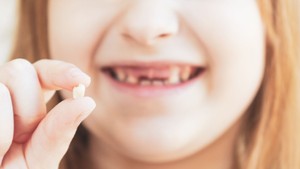Blog
Understanding teeth development in kids empowers parents to support healthy smiles from infancy through adolescence.
Understanding teeth development in kids empowers parents to support healthy smiles from infancy through adolescence. From the first baby tooth to the last permanent molar, each stage influences chewing efficiency, speech clarity, facial growth, and jaw function. With attentive monitoring, timely guidance, and early intervention when needed, families can help children build a strong foundation for lifelong oral health. This page provides education and care tips to track developmental milestones, address emerging concerns, and coordinate with your dentist to promote proper alignment and overall well-being. As part of comprehensive dental development, early awareness of the stages of tooth development helps parents know what to expect and when to seek advice.
Understanding Baby Teeth
Primary teeth, commonly called baby teeth, are the first set to emerge, and most children develop 20 in total. While temporary, they serve essential roles: maintaining space for future permanent teeth, enabling clear speech, supporting nutritious eating habits, and guiding jaw growth. Proper care of baby teeth is critical; decay or damage can affect comfort, nutrition, and the health of developing permanent tooth buds, making this phase a key part of overall dental development.
Teething typically begins between 6 and 10 months of age. The usual eruption sequence is lower front incisors, upper front incisors, first molars, canines, and second molars, with full eruption commonly complete by around age 3. Timing can vary from child to child, and minor deviations from the typical schedule are generally normal within the stages of tooth development.
Common teething signs include drooling, swollen or tender gums, increased chewing, mild fussiness, and changes in sleep patterns. Some children may experience a slight rise in body temperature during teething; however, a true fever is not a typical teething symptom and should be evaluated by a healthcare professional. Parents who notice unusual discomfort, significant swelling, or feeding refusal should seek guidance from their dentist to support healthy teeth development in kids.
Stages of Tooth Development
Children’s teeth development follows two major phases. First, the primary teeth erupt during early childhood. Later, permanent teeth begin replacing baby teeth, generally starting around age 6. The period when baby and permanent teeth coexist, known as the mixed dentition phase, can last into the early teen years. Final stages involve the eruption of second molars and, for many, the appearance or impaction of wisdom teeth in late adolescence or early adulthood. Understanding these stages of tooth development is central to monitoring dental development over time.
Typical counts by age include the following:
- Ages 1–3: up to 20 primary teeth erupt and complete the baby set.
- Ages 6–8: first permanent molars and permanent incisors begin to emerge as baby teeth shed.
- Ages 9–12: canines and premolars replace primary teeth and shape the bite.
- Ages 12–13: second permanent molars typically erupt and help establish chewing efficiency.
- Ages 17–21: wisdom teeth may erupt, remain impacted, or be recommended for removal depending on spacing and alignment.
Several factors influence timing and quality of tooth development. Genetics play a notable role, as do nutrition, particularly adequate calcium and vitamin D, oral hygiene practices, and habits such as thumb-sucking or prolonged pacifier use. Early childhood conditions, including enamel defects, trauma, or chronic mouth breathing, can affect eruption patterns and alignment. Routine check-ups with your dentist and timely orthodontic evaluations help identify crowding, bite discrepancies, and jaw growth concerns while guiding effective treatment options across the stages of tooth development and broader dental development.
Teething Tips for Parents
Parents can ease teething discomfort with simple, safe strategies. Offer a clean, chilled (not frozen) teething ring to soothe gums, gently massage the gums with a clean finger, and provide age-appropriate solid foods, such as cool cucumber sticks, under close supervision. Maintaining predictable routines and offering comfort through extra cuddles, quiet play, story time, and calming activities can also help reduce irritability.
Safe remedies include cold compresses, silicone teething toys, and approved over-the-counter pain relievers used exactly as directed by your pediatrician. Avoid topical numbing gels containing benzocaine due to potential safety risks, and do not use teething necklaces or bracelets, which pose choking and strangulation hazards.
Consult a dentist if teething appears unusually painful, if gum swelling persists, if your child refuses to eat or drink, or if a high fever develops. Seek evaluation if teeth erupt significantly out of sequence or if you observe concerns such as pronounced crowding or crossbite. If your child continues thumb-sucking or pacifier use beyond the toddler years, schedule an orthodontic assessment to evaluate bite, airway considerations, and jaw development. These steps support healthy teeth development in kids and smooth progression through the stages of tooth development.
Maintaining Oral Health
Establishing healthy habits early protects enamel, supports proper jaw growth, and lowers the risk of cavities and gum inflammation. Caring for baby teeth matters: decay can spread, cause pain that interrupts sleep and eating, and affect developing permanent teeth. Early attention helps children maintain confidence and makes future orthodontic care more straightforward as dental development progresses.
Recommended routines for families include the following:
- Begin brushing as soon as the first tooth appears with a smear of fluoride toothpaste; increase to a pea-sized amount at age 3.
- Brush twice daily for two minutes and floss once daily as teeth begin to touch.
- Limit sugary snacks and drinks; encourage water between meals and balanced nutrition.
- Schedule regular dental visits and consider an orthodontic assessment around age 7 to monitor alignment, spacing, and jaw relationships as part of healthy teeth development in kids.
Remain alert for signs of dental or orthodontic problems, such as white or brown spots on teeth, sensitivity to cold or sweets, bleeding gums, mouth breathing, snoring, persistent thumb-sucking, or difficulty chewing. Early intervention, whether dental treatment to address decay or orthodontic guidance to correct developing bite issues, can prevent more complex problems and support balanced facial and jaw development. Coordinated care provides tailored advice, monitors growth patterns, and recommends treatment when appropriate to foster steady dental development.
How Orthodontic Care Supports Families
Teeth development in kids benefits from a proactive, coordinated approach between parents, dentists, and orthodontists. Early evaluations can identify crowding, spacing, bite discrepancies, and jaw growth concerns during the mixed dentition years. Providers review eruption sequences, check functional habits like tongue posture or mouth breathing, and offer clear guidance on timing and treatment options aligned with the stages of tooth development.
When needed, interceptive orthodontics can influence jaw growth, create space for erupting permanent teeth, and reduce the need for more extensive treatment later. Teams explain findings in family-friendly terms, answer questions, and work closely with your dentist to align care. Whether your child is teething, transitioning to permanent teeth, or preparing for braces, informed guidance helps you navigate each phase of dental development confidently.
To learn more or schedule an assessment, contact a local orthodontic office. Together, you can monitor your child’s teeth development in kids, promote healthy habits, and lay the groundwork for a functional, beautiful smile that lasts.





